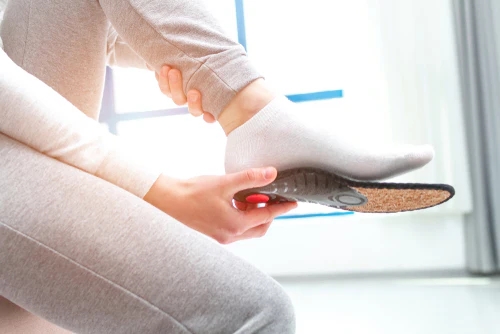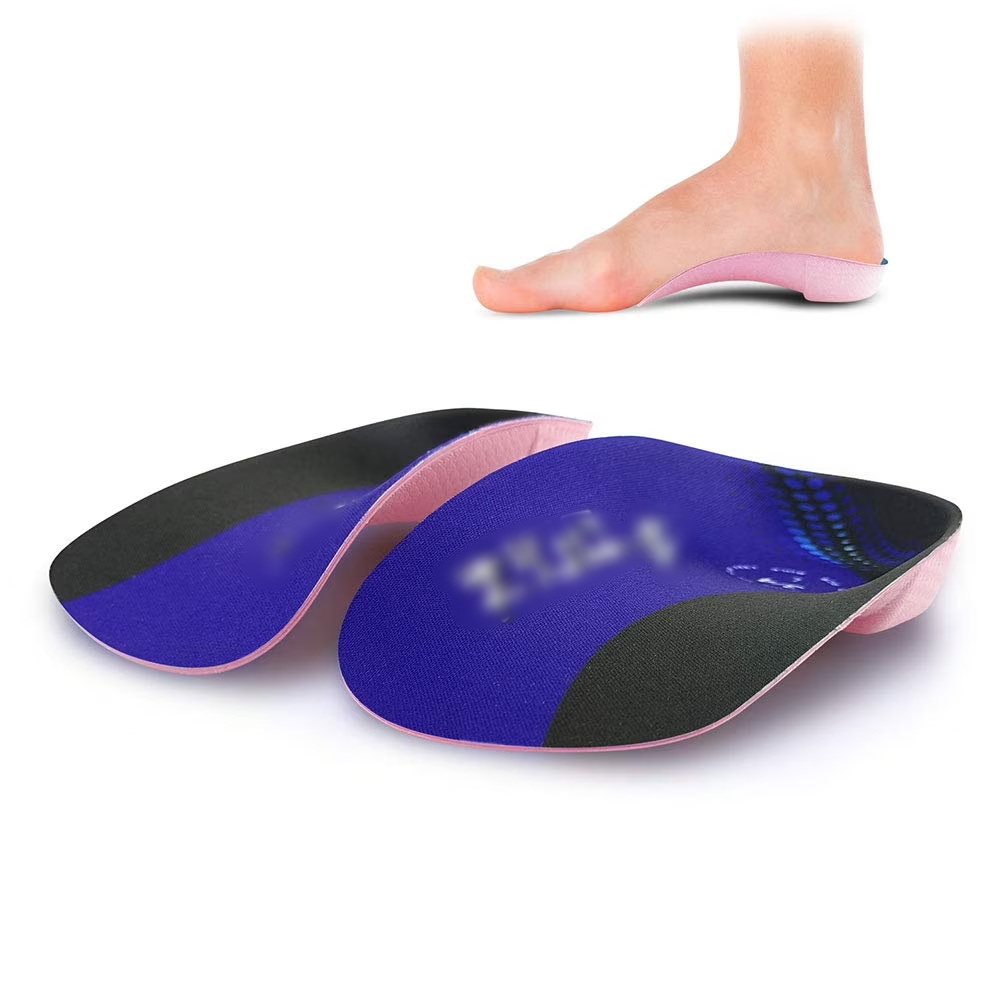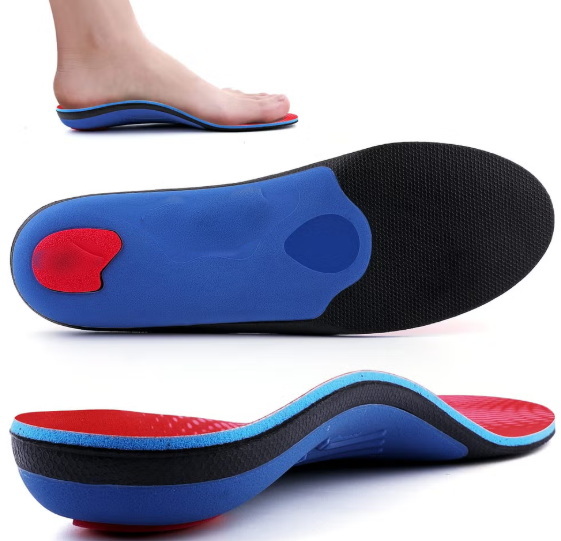Views: 222 Author: Edvo Publish Time: 2025-11-05 Origin: Site











Content Menu
● Understanding Foot Arch Anatomy
>> What Is a Normal Foot Arch?
>> Structure of the Foot's Arches
● Functions and Importance of the Foot Arch
>> Weight Distribution and Shock Absorption
>> Foot Protection and Adaptability
>> Are They Necessary for Those with Normal Arches?
>> When Arch Insoles May Cause Problems
● Selecting the Right Arch Insole
● Lifestyle Considerations for People with Normal Arches
● Use Cases: When to Add Arch Insoles
● FAQs
>> 1. What defines a normal foot arch?
>> 2. Can arch insoles improve comfort for people with normal arches?
>> 3. Will using arch insoles weaken the arch muscles for normal feet?
>> 4. How do I know if I need arch support with a normal arch?
>> 5. Are custom arch insoles recommended for people with normal arches?
Many individuals wonder whether those with a normal foot arch need arch insoles, or if such support is only essential for people with flat feet or high arches. If you're interested in keeping your feet healthy, optimizing comfort, and prolonging shoe and foot longevity, understanding the role of arch insoles for normal arches is critical. This article explores foot arch anatomy, the functions of various arches, the benefits and limitations of insoles, and provides visual guides and videos to further clarify these points.

A normal foot arch, often referred to as a "medium" or "neutral" arch, is the most common foot type. It features a moderate curvature between the heel and the balls of your feet. This arch height provides a balanced foundation for distributing weight and absorbing shocks during walking, running, and daily activities.
Visually, a normal arch forms a clear–but not overly high or flat–curve along the inside of the foot. This optimal structure assists with mobility, stability, and adaptability on different surfaces.
The foot is a marvel of biomechanics, consisting of 28 bones arranged into three key arches:
- Medial longitudinal arch (higher, along the inside of the foot)
- Lateral longitudinal arch (lower, on the outside edge)
- Transverse arch (across the midfoot)
Supported by sturdy ligaments (such as the plantar fascia and spring ligament), tendons, and muscles (like tibialis posterior and flexor hallucis longus), these arches deliver both rigidity and flexibility. This combination allows the foot to absorb shock, provide propulsion, and remain stable during movement.
A normal arch is incredibly efficient at distributing body weight across the heel and ball of the foot. Its spring-like shape absorbs impact when the foot touches the ground and releases energy with every step, reducing stress on joints, ligaments, and tendons.
During walking or running, the arch lengthens and flattens to absorb shock, then recoils to propel the body forward. This dynamic movement cycle helps reduce injury risk, maintain balance, and enhance athletic performance.
Foot arches safeguard the blood vessels and nerves on the sole, protecting them against compression. Their flexible nature also allows the foot to adapt easily to uneven ground, minimizing the risk of slips and falls.
Arch insoles are specialized shoe inserts designed to augment the foot's natural arch, provide cushioning, and offer corrective support where needed. They are typically fabricated from EVA foam, gel, or custom-molded materials.
Arch insoles come in varying heights and shapes to match different foot types, ranging from low-profile to raised supports.
For individuals with normal arches, arch insoles are often optional. The natural shape of the foot frequently provides sufficiently balanced support and shock absorption. However, certain scenarios may call for additional arch insoles:
- Extended standing: Professions or lifestyles involving long hours on feet sometimes benefit from extra arch support to reduce fatigue.
- High-impact sports: Runners, tennis players, or athletes may choose insoles to increase energy return and minimize micro-injuries.
- Shoe fit adjustment: Ill-fitted shoes or those with minimal built-in arch support can be significantly improved by quality insoles.
- Mild discomfort: Occasional soreness, especially from hard surfaces, may be alleviated with soft arch cushions.
Over-reliance on arch insoles—especially those that are overly rigid or high—can sometimes cause the foot's muscles and ligaments to become dependent on artificial support, potentially weakening them over time. For people with normal arches, using arch insoles must strike a balance between providing comfort and avoiding unnecessary interference with natural foot function.

- Shape & Height: Choose insoles with a contour that matches your foot's arch. Avoid overly pronounced arch bumps if your arch is medium.
- Cushioning Type: Soft insoles may be best for long hours on your feet, while firmer types aid athletic performance.
- Material: Breathable, moisture-wicking materials help maintain foot hygiene and comfort.
- Customization: Some manufacturers offer moldable insoles or those with adjustable arch pads.
Photo Series: Side-by-side images of various insole types, annotated to clarify differences in shape, firmness, and use scenarios.
- Remove any existing shoe liner before inserting a new insole.
- Ensure your toes and heel sit comfortably on the insole with no slippage.
- Allow for a trial period; feet sometimes need time to adjust to new insoles.
Properly maintaining arch insoles helps maximize their benefits and lifespan. Clean insoles regularly, air-dry them, and replace them if significant wear or flattening is observed.
Rotating between shoes with and without insoles is advisable, as it can prevent overdependence on supplemental support while keeping natural arch strength intact.
- Choose supportive footwear with a naturally contoured footbed.
- Alternate shoe types throughout the week to encourage natural movement.
- Practice foot exercises to preserve arch muscle tone and flexibility (e.g., toe curls and arch lifts).
- Remain attentive to any discomfort or fatigue, adjusting insole use accordingly.
- Shift workers and healthcare professionals exposed to prolonged standing
- Active athletes seeking enhanced foot propulsion
- Elderly adults with reduced fat pad on the foot, needing extra cushioning
- Anyone experiencing mild discomfort, especially on hard surfaces
People with a normal arch typically do not require arch insoles for everyday comfort and support. Their feet are equipped with natural structures optimized for shock absorption, weight distribution, and movement efficiency. However, arch insoles may bring additional benefits in specific situations, such as intense physical activity or prolonged standing. Moderation and customization are key: choose insoles suited to your actual needs, regularly practice arch-strengthening exercises, and prioritize footwear that protects and supports your foot's natural form.

A normal foot arch is moderate in height, neither too flat nor too high, and forms a gentle curve on the inside of the foot. This structure provides natural shock absorption and stability for everyday activities.
Yes, arch insoles can increase comfort for those with normal arches during long periods of walking or standing, strenuous exercise, or when shoes lack sufficient built-in arch support.
Occasional use of arch insoles for added comfort is generally safe, but consistent overuse may reduce muscle strength and natural resilience if not paired with foot exercises.
Common indicators include frequent soreness, fatigue, or discomfort in the feet after long activities. Occasional discomfort may suggest some benefit from cushioned insoles or mild arch support.
Customized arch insoles are usually reserved for special needs—such as correcting gait imbalances or addressing chronic pain. For most individuals with a neutral arch, standard comfortable insoles are adequate.